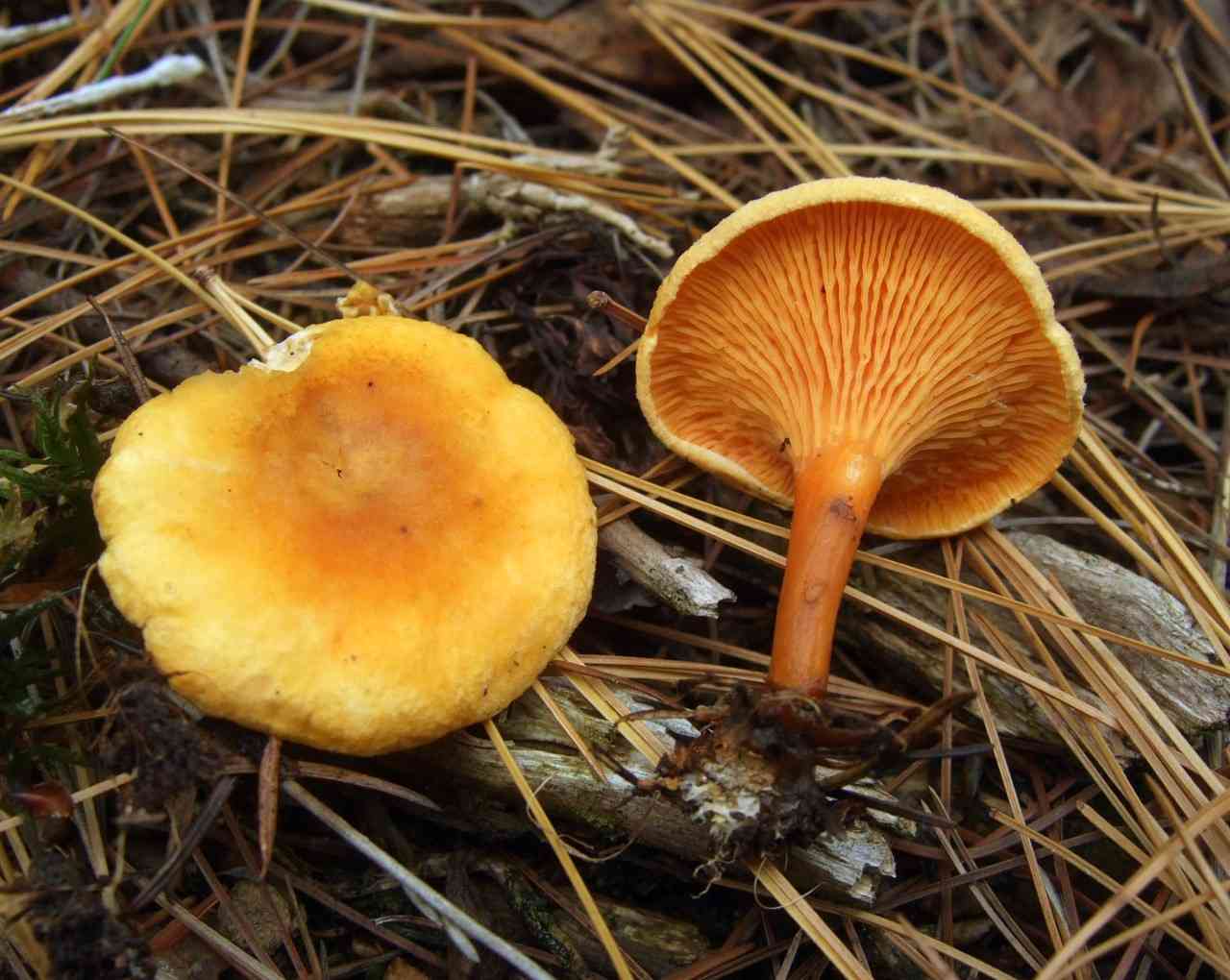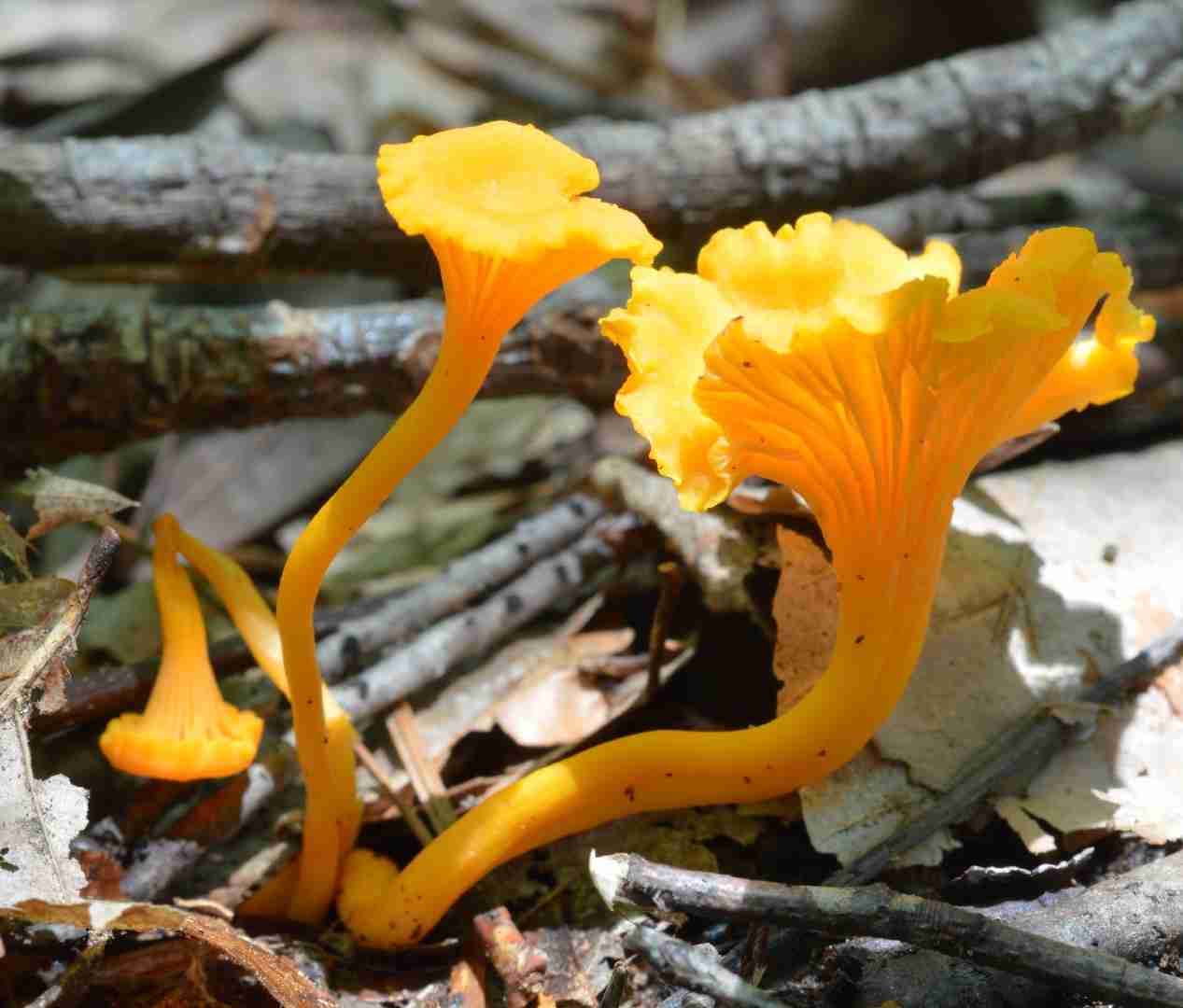
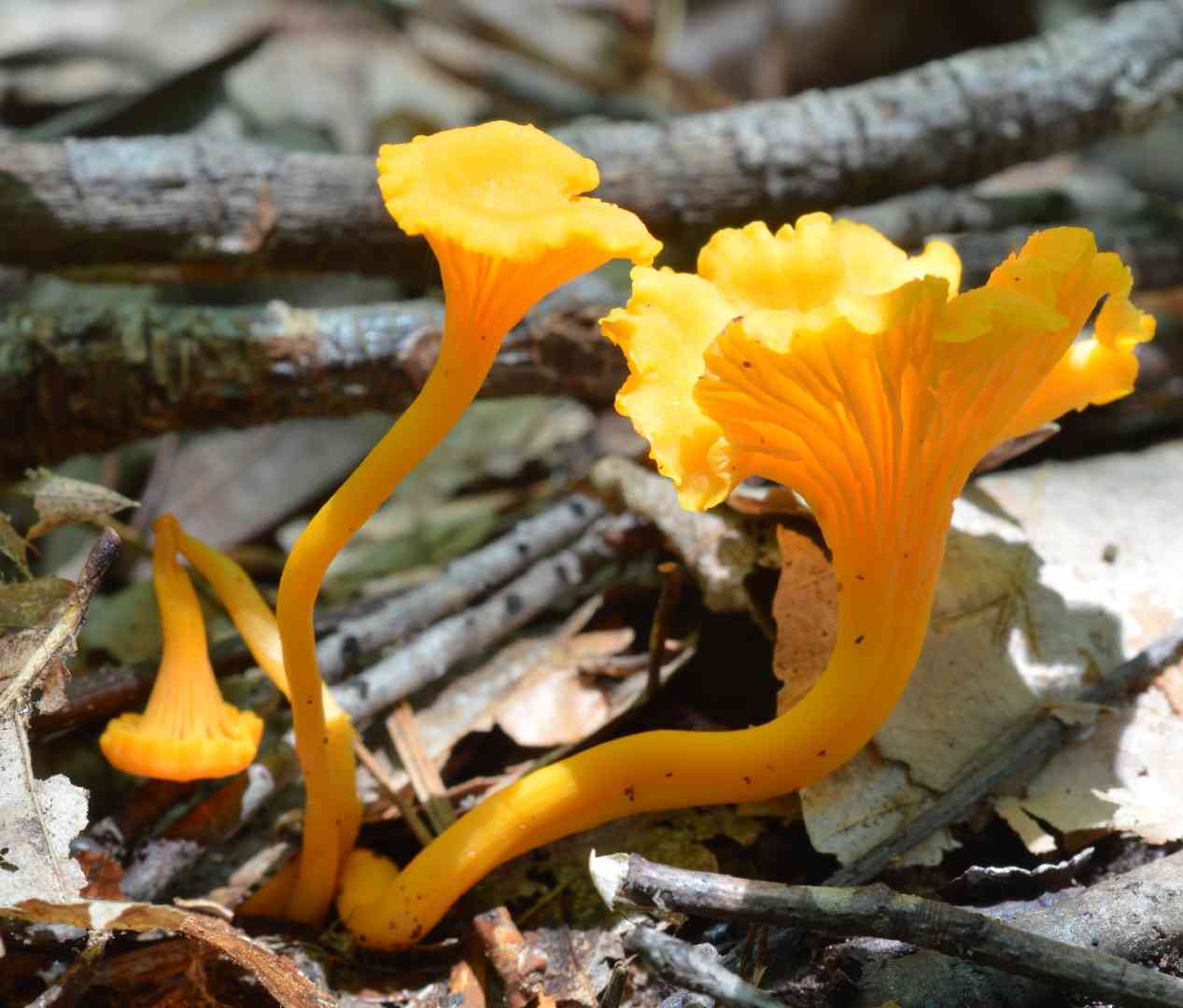
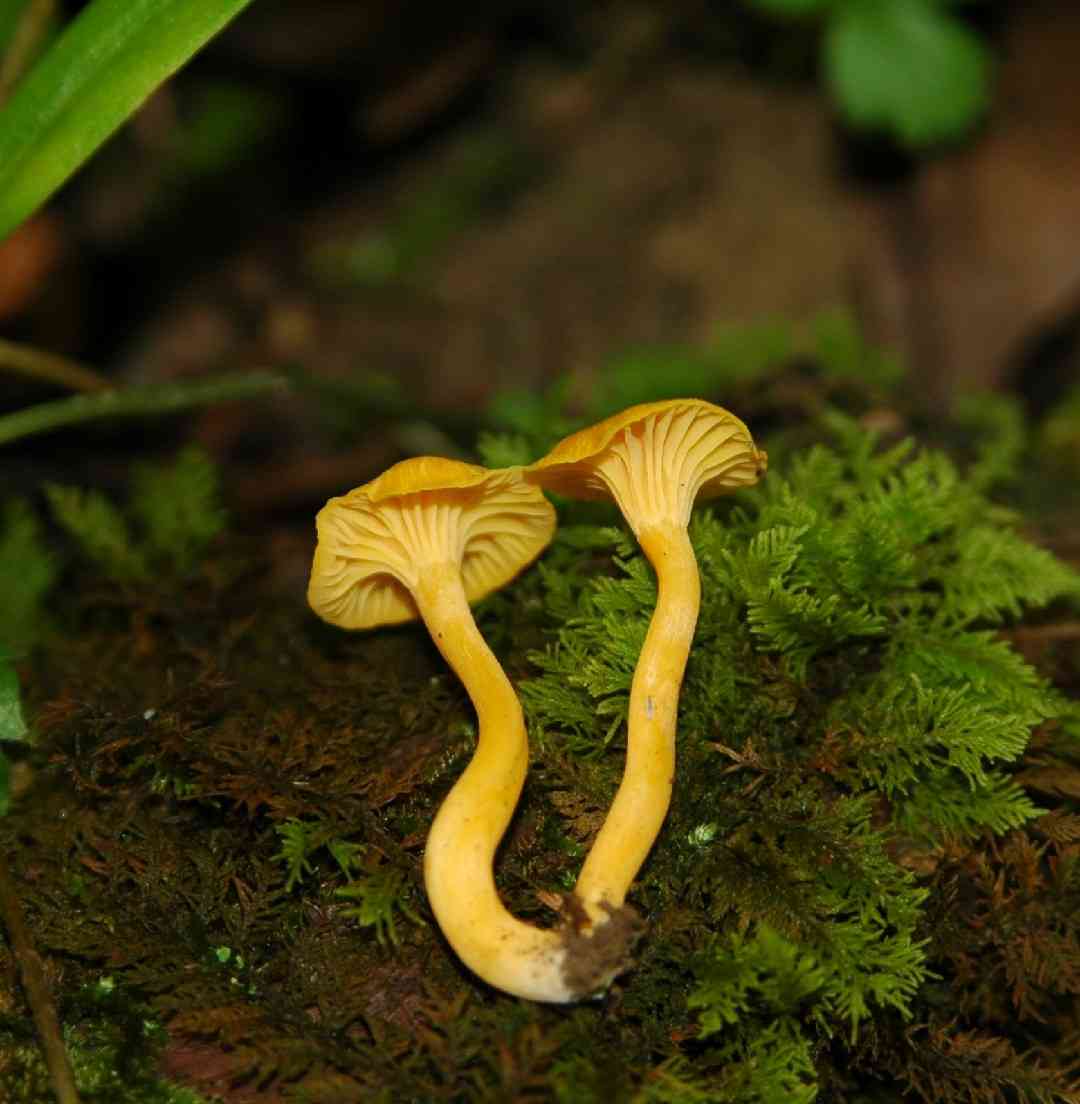
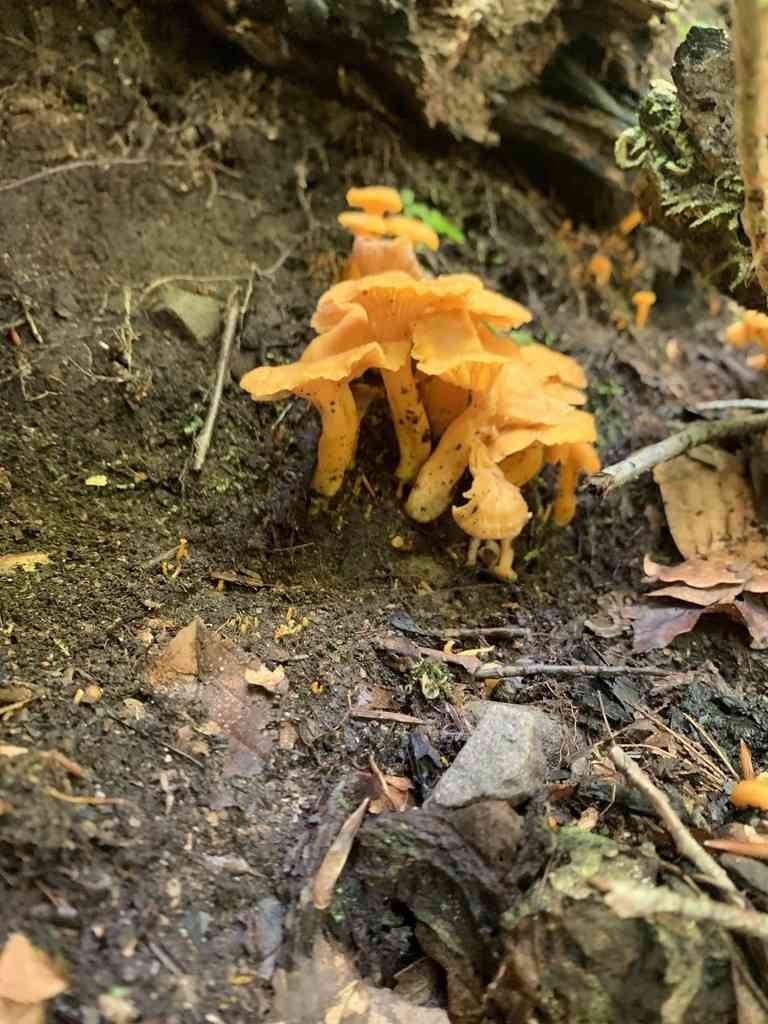
Small chanterelle
Cantharellus minor
A species of Chanterelles.
The vibrant orange heads of the diminutive chanterelle (Cantharellus minor) are readily noticeable emerging from thin stems amidst the moss-covered forest ground, particularly under oak trees. Their broad-set gills and brightly hued, almost waxy-appearing caps serve as definitive identification markers.
In This Article
Attributes of Small chanterelle
Cap Diameter
5 - 20 mm
Height
1 - 4 cm
Cap
Cap 5 - 20 mm across; broadly convex to planoconvex; egg-yolk yellow to orange-yellow or orange
Cap Shape
Convex, Flat, Depressed
Cap Surfaces
Smooth
Gills
Decurrent; yellowish to white
Stem
Stem 1 - 4 cm long, 1 - 3 mm thick; slender, tapering slightly to base; egg-yolk yellow to orange-yellow or orange
Stem Shapes
Tapering
Stem Surfaces
Smooth
Flesh
Yellowish to orangish
Ring
Ringless
Spore Print Color
Pale yellowish
Odor
Slightly sweet, gently fragrant, otherwise non-distinctive.
Body Color
YellowOrange
Flesh Bruises
The flesh or milk does not discolor when bruised or cut.
Growth Form
Solitary, Scattered, Gregarious
Nutrient Gathering
Mycorrhizal
Substrate
On soil, Mosses
You can find Small chanterelle by these plants
Oaks, Pines
Occurence Habitats
Deciduous Woodland
Species Status
Least Concern
Endangered Species
No
Scientific Classification of Small chanterelle
Phylum
Club fungi
Class
Mushroom-forming fungi
Order
Cantharellales
Family
Chanterelle
Genus
Chanterelles
Toxicity and Edibility of Small chanterelle
Is Small chanterelle Toxic?
Toxicity information is not available for this mushroom. Always consult with an expert before consuming any wild mushrooms.
